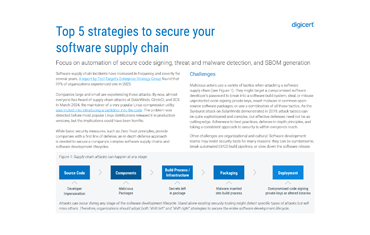DDoS Attacks: Mitigation Services

Note: In a previous blog post, we discussed ways you can prepare for a DDoS attack. Here we discuss another option for mitigating a DDoS attack.
Call the Expert and Save Time
Sometimes taking care of a problem yourself is a great way to save money and hassle, but at other times it's a waste of time. A recent study shows that, on average, organizations take 12 hours to recover from a DDoS attack. Although IT teams can deal with a DDoS attack, their level of experience and skill does not rival that of an industry expert. The longer your organization takes to mitigate the attack, the longer that recovery time becomes, and as recovery time increases so does lost revenue. Your organization may feel comfortable and qualified to mitigate a DDoS attack. However, in most every DDOS attack, hiring an expert will save you time and money. DDoS mitigation services offer that needed expertise in case of an attack.
Choosing a DDoS Mitigation Service
Below we’ve outlined some considerations to keep in mind when choosing a DDoS mitigation service provider.
- What does their track record look like? Ask them about DDoS attacks they’ve mitigated for other clients. If you’ve already suffered an attack, tell them about it, and ask them what they would have done. Make sure you go with someone reputable, who can show you instances where they’ve mitigated attacks successfully.
- Speed is key. When a DDoS attack hits your site, you need to respond immediately in order to minimize the damage. You will need a provider who can work as fast as you need them to. Make sure to ask them about their response times. How long does it take them on average to begin mitigating an attack? What is the maximum time it will take them?
- Don’t go with a Jack of all trades. Find an expert in the field, a company that specializes only with DDoS and nothing else. You’ll want a provider that has technical experience to deal with current attack trends, along with emerging attack trends.
- Tech support considerations. What kind of tech support do they have? Most providers are available 24 hours a day, 7 days a week, 365 days a year, but it’s always good to make sure. Also, find out if you have to go through an automated system before speaking to tech support or if you can go straight to the people who can help you.
- What type of protection packages or services do they offer? Many providers offer DDoS monitoring services, while some only offer emergency mitigation services. In their monitoring they will keep an eye on the amount of traffic that goes to your site. They analyze trends, and keep an eye on unusual spikes in traffic and activity. Decide what you want beforehand and see what they have available.
- Lastly, what kind of reporting do they provide? In the event of an attack, the most helpful thing in the aftermath is reporting. Some of the better providers offer reporting services that can tell you what type of attack hit your organization, IP addresses and IP ranges, etc. Reporting will help you figure out where you’re weakest so you can then strengthen your infrastructure. Reporting is also useful if you decide to alert law enforcement. Law enforcement forensics teams need as much information as possible.
Always Be Prepared
While DDoS attacks have the potential to be very damaging, the right preparations can drastically reduce the effects of the attack on any organization. Whether your organization has experienced a DDoS attack or not, avoid the stress and chaos of making a plan after an attack has already happened, and make an emergency plan today.







